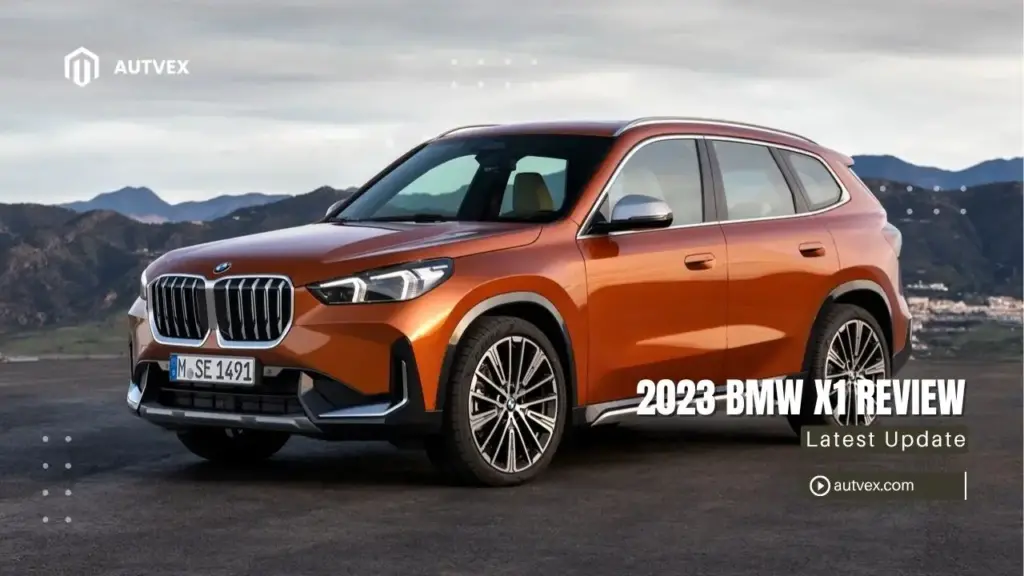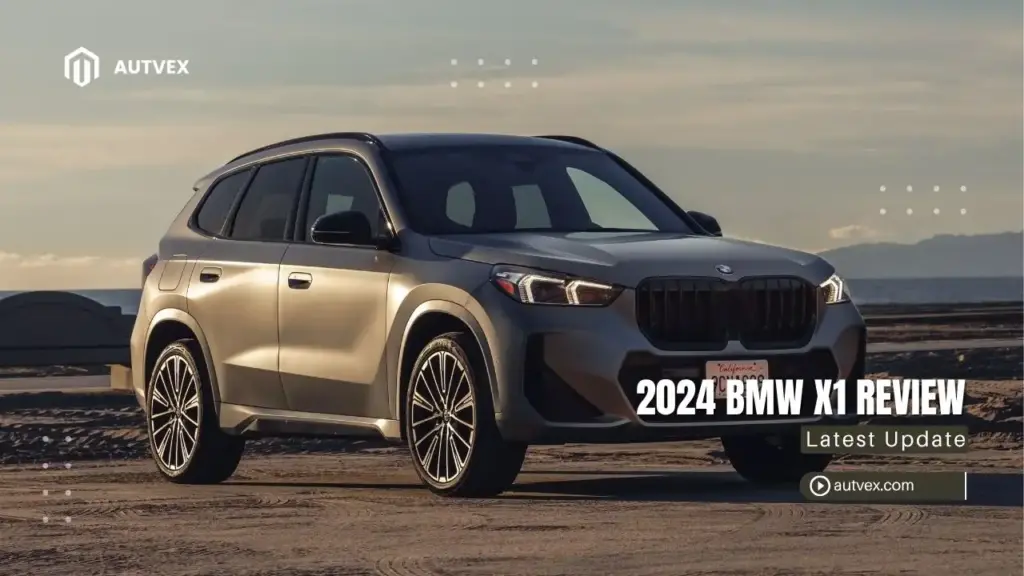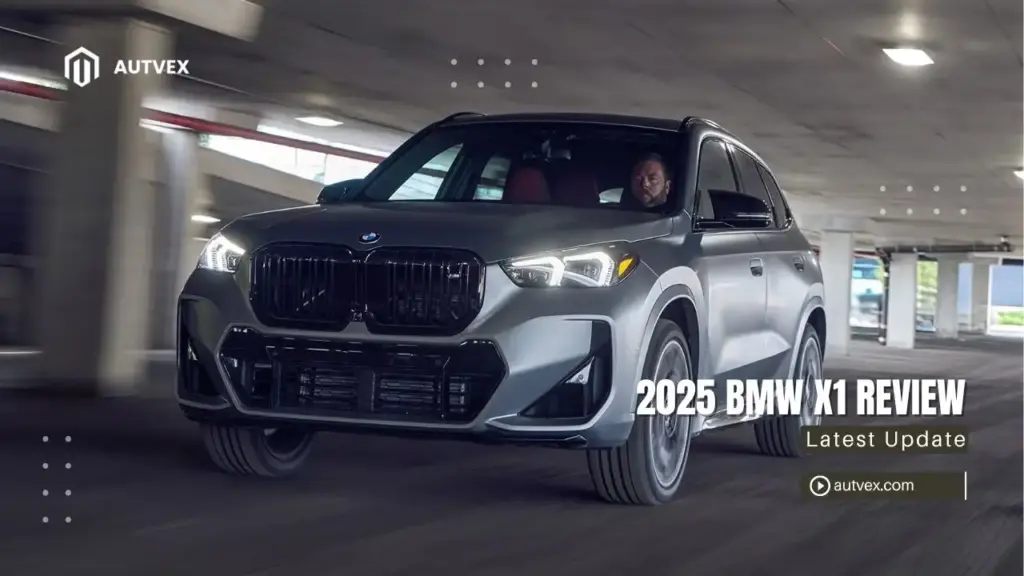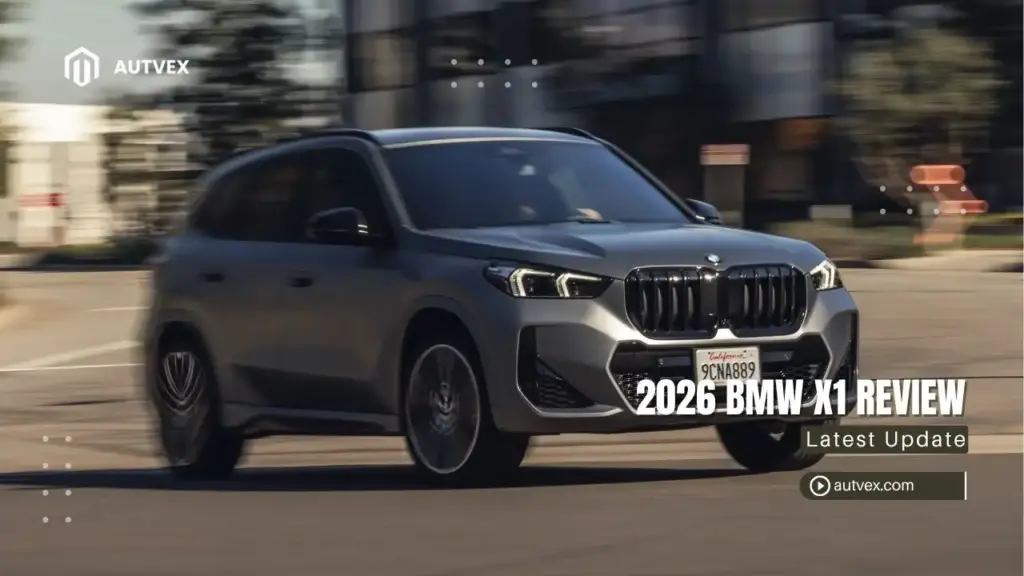You may also like:
The 2023 BMW X1 launches BMW’s third-generation compact luxury SUV featuring complete redesign with 241 horsepower turbocharged engine (+13 HP increase), new 7-speed dual-clutch transmission, and standard all-wheel drive across entire US lineup starting at $39,595[1][2]. Car and Driver testing confirms 5.4-second 0-60 mph acceleration—substantially quicker than BMW’s conservative 6.2-second estimate—while achieving EPA-rated 28 MPG combined fuel economy[1]. The redesigned interior showcases flagship-level BMW Curved Display with iDrive 8 though eliminates beloved physical rotary controller creating controversy among traditionalists who call touchscreen-only interface “huge mistake”[3]. Cars.com declares redesigned X1 “polished and plucky small SUV” delivering spirited acceleration and engaging road manners though Consumer Reports notes “side steps” including inconsistent low-speed power delivery and less user-friendly controls[1][4]. First-year reliability concerns emerge with owners reporting electronic malfunctions, transmission issues, and multiple brake recalls tempering otherwise strong value proposition as entry point into BMW ownership[5].
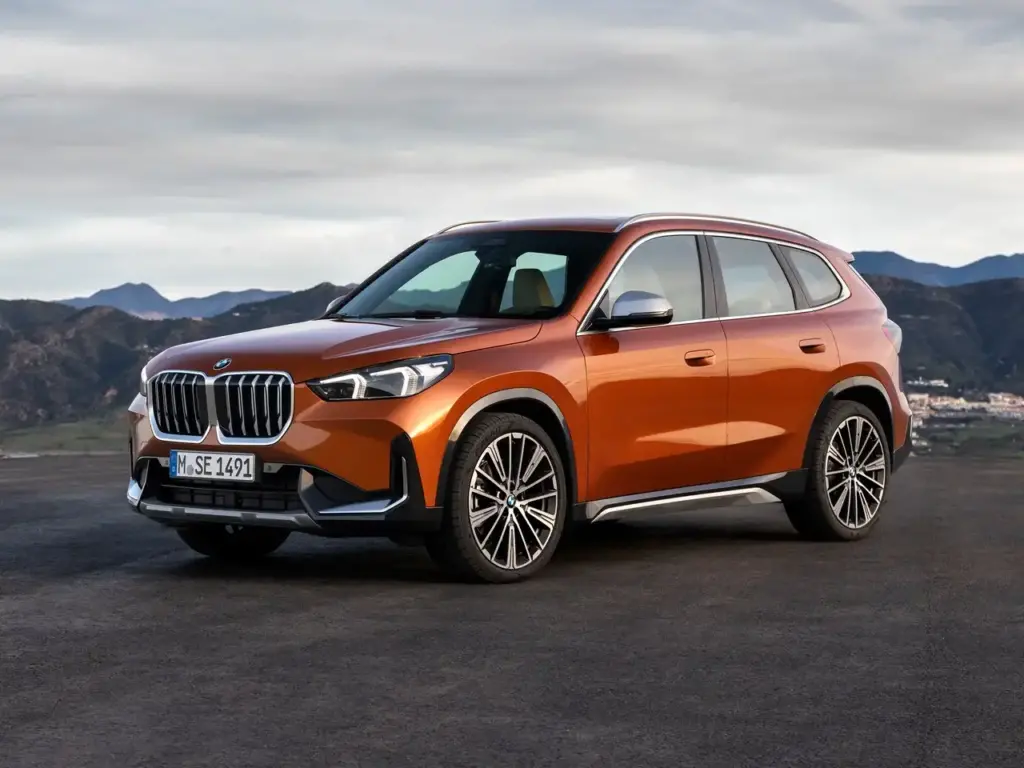
What’s New for the 2023 BMW X1
Complete Third-Generation Redesign
The 2023 model represents first complete redesign since 2016 launching all-new U11 chassis platform replacing second-generation architecture. BMW addresses previous generation criticisms delivering longer, wider, taller dimensions improving interior space and passenger accommodations[1][2]. Enhanced technology integration throughout includes flagship-level iDrive 8 system previously exclusive to premium models.
Exterior receives bold transformation with larger kidney grille, sharp LED headlights, and sculpted body lines creating athletic stance. Interior overhaul introduces floating center console design maximizing storage space. Third-generation represents comprehensive re-engineering addressing previous model’s conservative styling and dated technology[2].
Third-Generation Redesign Highlights:
- All-new U11 platform: Complete chassis redesign
- First redesign since 2016: Seven-year development cycle
- Larger dimensions: Longer, wider, taller than predecessor
- Improved interior space: Enhanced passenger accommodations
- Enhanced technology: Flagship-level iDrive 8 integration
- Bold exterior styling: Addresses conservative predecessor
- Comprehensive re-engineering: Every component updated
Powertrain & Transmission Upgrades
Retuned 2.0-liter turbocharged inline-four produces 241 horsepower at 4,500 rpm representing 13 HP increase over 2022’s 228 HP output[1][2]. Torque output reaches 295 lb-ft from just 1,500 rpm providing robust low-end power for confident acceleration. Miller-cycle technology with aluminum block/head construction optimizes efficiency despite power increase.
New 7-speed dual-clutch automatic transmission replaces previous eight-speed automatic providing smooth, quick gear changes that optimize shifts to route topography[2]. However, some reviewers note inconsistency at low speeds affecting refinement. Standard all-wheel drive (xDrive) becomes mandatory—front-wheel-drive sDrive28i discontinued for US market eliminating entry-level FWD option[1][2].
Real-world testing reveals impressive 5.4-second 0-60 mph performance significantly beating BMW’s conservative 6.2-second estimate[1]. Quarter-mile completed in 14.1 seconds at 99 mph showcasing strong acceleration for compact SUV segment. Understanding how long it takes to buy a car helps set realistic purchasing timeline expectations when ordering your X1.
Technology & Interior Overhaul
BMW integrates latest iDrive 8 operating system into smallest SUV matching flagship iX electric SUV and 7-Series sedan. BMW Curved Display presents crisp-looking single panel serving as both 10.25-inch digital instrument cluster and 10.7-inch central touchscreen[1]. Navigation standard across lineup alongside wireless Apple CarPlay and Android Auto integration.
However, major controversy surrounds elimination of physical iDrive rotary controller—beloved tactile interface replaced by touchscreen-only operation[3]. Climate control buttons eliminated forcing all temperature adjustments through touchscreen menus. BMW Blog declares this “huge mistake” noting distraction and reduced intuitiveness[3].
Premium materials throughout interior elevate ambiance. Floating center console design creates open feel maximizing storage space versus traditional center stack. Toggle-switch shift lever adopts minimalist design freeing console real estate[1].
Pricing & Market Positioning
Starting MSRP of $39,595 for sole xDrive28i trim plus approximately $1,000-1,175 destination charge positions X1 competitively against Mercedes-Benz GLA-Class ($38,650) and other entry-level luxury SUVs[1]. Single trim offering simplifies decision process though Car and Driver’s as-tested price reached $50,795 with optional packages demonstrating how quickly costs escalate[1].
Premium pricing versus previous generation reflects comprehensive redesign, enhanced technology, more powerful engine, and standard all-wheel drive. Entry-level BMW SUV positioning makes X1 accessible gateway into brand ownership at manageable price point versus larger X3 starting significantly higher.
| Specification | 2023 X1 xDrive28i | 2022 X1 sDrive28i | Change |
|---|---|---|---|
| Starting MSRP | $39,595 | $36,600 | +$2,995 |
| Horsepower | 241 HP | 228 HP | +13 HP |
| Torque | 295 lb-ft | 258 lb-ft | +37 lb-ft |
| Transmission | 7-spd DCT | 8-spd auto | New DCT |
| Drivetrain | xDrive AWD | sDrive FWD | AWD standard |
| 0-60 mph (tested) | 5.4 sec | 6.3 sec | -0.9 sec |
| EPA Combined | 28 MPG | 27 MPG | +1 MPG |
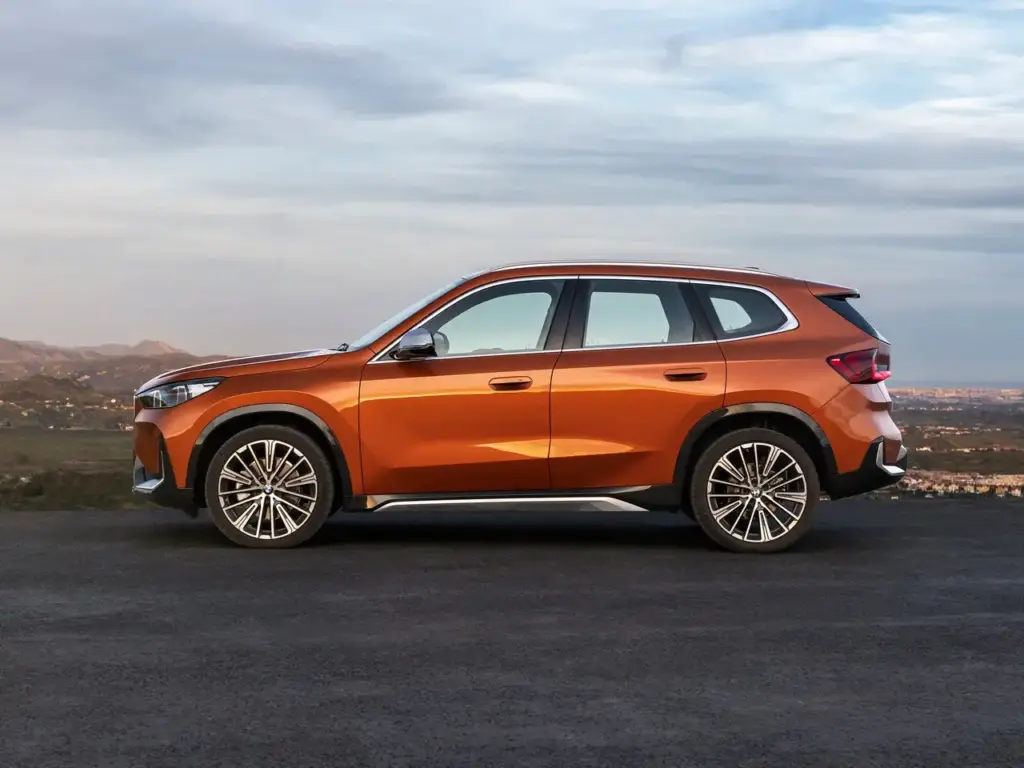
2023 BMW X1 Design & Styling
All-New Third-Generation Exterior
Complete redesign addresses previous generation’s conservative styling delivering bold, mature appearance. Larger kidney grille with bolder proportions dominates front fascia creating aggressive presence. Sharp LED headlights frame grille providing modern lighting signature[1][2].
3D rear taillights with L-shaped BMW signature reinvented for X1 create distinctive nighttime appearance. Sculpted body lines emphasize athletic stance distinguishing X1 from bland competitors. Flush door handles reminiscent of classic BMW design emerge when approached. Clean rear diffuser eliminates visible tailpipes creating smooth appearance[1].
Muscular wheelarches emphasize presence creating confident stance. Three bumper design variations—Baseline, X line, M Sport—provide personalization options. Cars.com declares redesigned X1 “polished and plucky small SUV” praising transformation[4].
Exterior Design Features:
- Larger kidney grille: Bold, aggressive proportions
- Sharp LED headlights: Modern signature lighting
- 3D rear taillights: L-shaped BMW design
- Sculpted body lines: Athletic character
- Flush door handles: Classic BMW reminiscent
- Clean rear diffuser: No visible tailpipes
- Muscular wheelarches: Confident stance
- Three bumper designs: Personalization options
Dimensions & Proportions
Third-generation measures 177.2 inches length, 72.6 inches width, and 64.6 inches height with 106.0-inch wheelbase—all increased versus predecessor[1]. Curb weight registers 3,762 pounds reflecting larger dimensions and enhanced equipment. Compact footprint maintains urban maneuverability despite size increases.
Five-door SUV configuration accommodates five passengers. Standard 18-inch wheels provide adequate rolling stock while optional 19-inch wheels enhance visual presence and handling capability. Longer wheelbase creates more interior space without compromising parking ease[1].
Design Philosophy & Execution
Bold, mature styling versus conservative predecessor creates more visually striking appearance overall. More aggressive design language balances SUV practicality with sporty BMW aesthetics. Modern execution positions X1 as aspirational vehicle rather than anonymous appliance[2].
More visually striking than Mercedes-Benz GLA establishing clear differentiation in crowded segment. Three bumper options enable customization matching buyer preferences from conservative Baseline to sporty M Sport. Design successfully addresses previous generation criticisms transforming X1’s market positioning[4].
Build Quality & Materials
Premium appearance exceeds expectations for entry-level positioning. Improved assembly quality over predecessor evidenced by precise panel gaps and excellent fit/finish. High-quality materials throughout create solid, substantial feel. Sturdy construction inspires confidence[1].
Standard 18-inch wheels adequate though 19-inch upgrade enhances visual presence. Premium execution justifies luxury positioning distinguishing X1 from mass-market competitors despite entry-level pricing within BMW lineup.
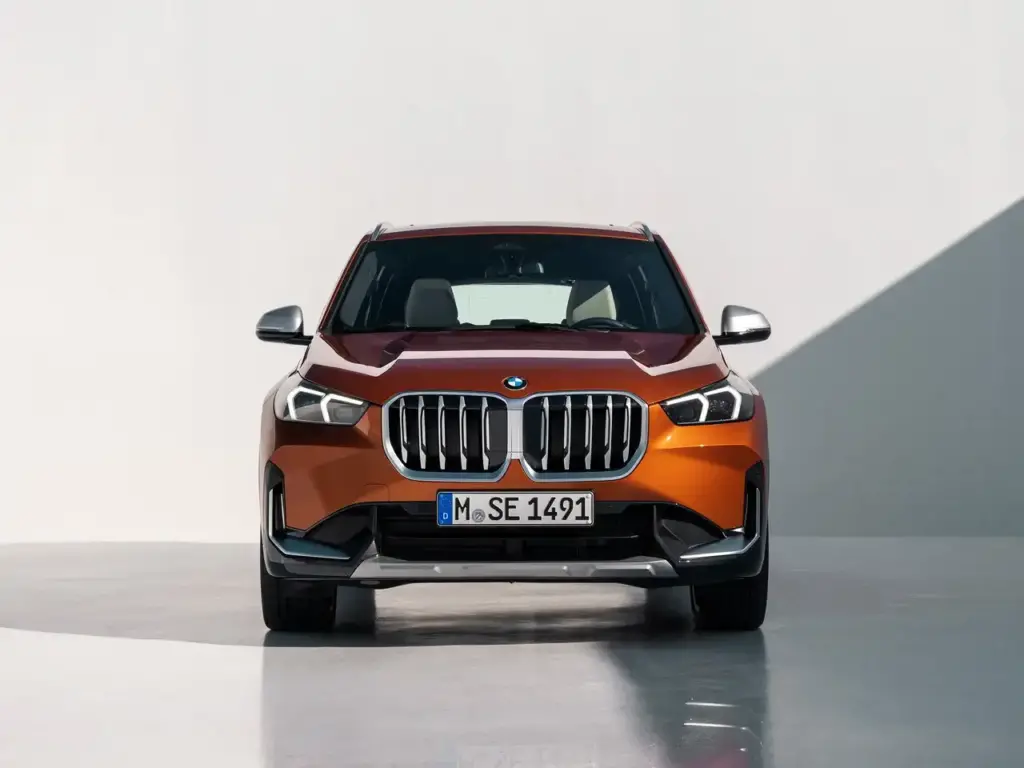
2023 BMW X1 Trim Levels & Pricing
xDrive28i: Single US Trim
Only trim available for 2023 US market simplifies decision process eliminating confusion. Starting MSRP $39,595 plus destination delivers comprehensive standard equipment justifying premium positioning[1]. 241 HP turbocharged 2.0L engine with 295 lb-ft torque from 1,500 rpm provides robust performance.
Tested 5.4-second 0-60 mph substantially beats BMW’s conservative 6.2-second claim demonstrating real-world performance advantage[1]. New 7-speed dual-clutch automatic paired with standard xDrive AWD eliminates FWD option. EPA estimates 28 MPG combined delivering competitive efficiency for turbocharged AWD luxury SUV.
xDrive28i Standard Equipment:
- 241 HP turbocharged 2.0L engine
- 295 lb-ft torque from 1,500 rpm
- 5.4-second 0-60 mph (tested performance)
- 7-speed dual-clutch automatic transmission
- xDrive AWD standard (no FWD option)
- 28 MPG combined EPA rating
- BMW Curved Display integrated screens
- iDrive 8 operating system
- 18-inch wheels standard
Standard Equipment (Comprehensive)
Comprehensive baseline equipment distinguishes BMW from budget competitors. BMW Curved Display integrates 10.25-inch digital cluster with 10.7-inch touchscreen in seamless curved glass design[1]. iDrive 8 operating system debuts flagship-level technology in entry-level SUV. Wireless Apple CarPlay and Android Auto standard eliminate cable requirements.
Navigation system standard provides turn-by-turn directions with real-time traffic information. Active Driving Assistant safety suite includes blind-spot monitoring, rear cross-traffic alert, frontal collision warning with automatic braking, and lane departure warning as standard[1]. Dual-zone automatic climate control, synthetic leather upholstery, power liftgate, LED headlights, ambient interior lighting, and SiriusXM satellite radio complete comprehensive baseline.
Optional Packages Worth Considering
Convenience Package bundles keyless entry, panoramic sunroof, wireless charging pad, and auto-dimming mirrors adding convenience features. M Sport Package includes adaptive M suspension addressing previous generation’s “brittle suspension” complaints, sport seats with enhanced bolstering, steering-wheel-mounted shift paddles, M Sport styling tweaks, and optional summer performance tires[2].
Premium Package adds head-up display projecting key information on windshield, Harman/Kardon premium audio system, and 360-degree exterior camera system simplifying parking. Standalone options include heated front seats and heated steering wheel worthwhile for cold-weather states. Driving Assistant Professional provides advanced driver aids expanding semi-autonomous capabilities.
Value Proposition Analysis
Comprehensive standard equipment justifies $39,595 pricing delivering more features baseline than many competitors. Single trim simplifies shopping eliminating trim-level confusion. Optional packages enable customization matching preferences though as-tested prices quickly reach $50,000+ with options[1]. Strong value versus Mercedes GLA and Audi Q3 providing better standard equipment and superior performance. For buyers exploring BMW’s compact lineup, the BMW 2-Series Gran Coupe offers sporty sedan alternative.
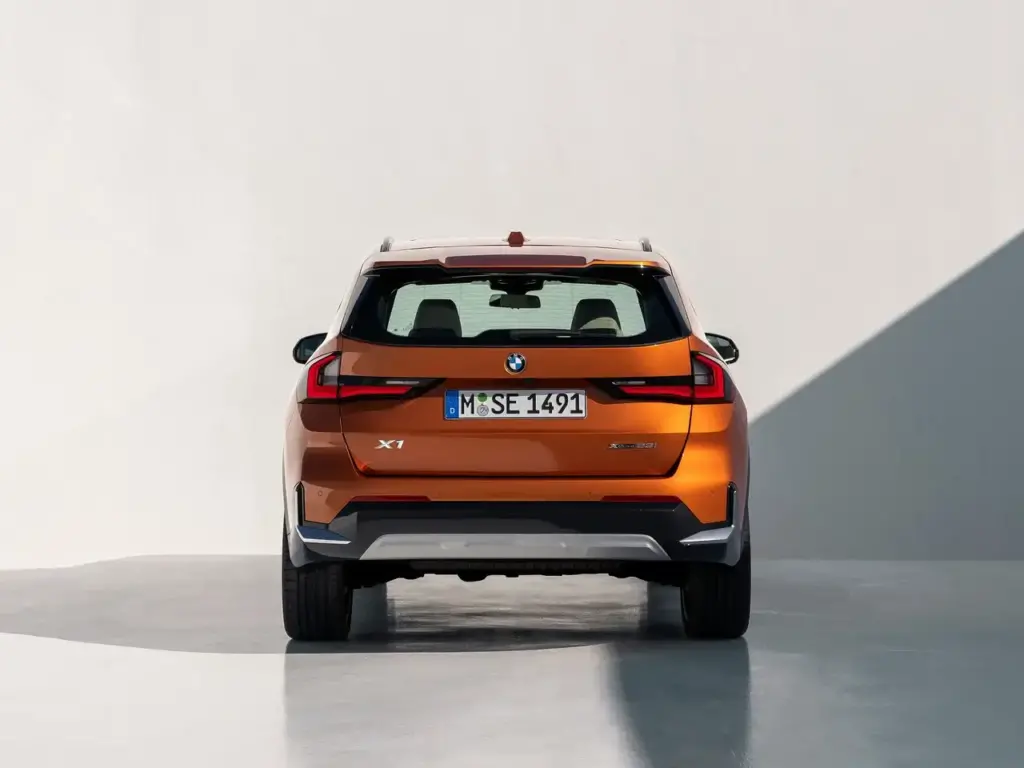
2023 BMW X1 Performance & Driving Dynamics
Engine & Powertrain Specifications
BMW TwinPower Turbo 2.0-liter turbocharged inline-four produces 241 HP at 4,500 rpm representing 13 HP increase over 2022’s 228 HP[1][2]. Torque output reaches 295 lb-ft at 1,500 rpm providing robust low-end grunt. Miller-cycle technology with aluminum block and head construction optimizes efficiency. Port and direct fuel injection maximizes performance and economy.
Premium unleaded fuel recommended optimizing performance though regular unleaded acceptable with reduced power output. Advanced engineering delivers more power yet improved efficiency—impressive achievement demonstrating BMW’s engineering prowess[1].
Engine Technical Specifications:
- Configuration: Turbocharged inline-four
- Displacement: 122 cubic inches (1,998cc)
- Technology: Miller-cycle with dual injection
- Construction: Aluminum block and head
- Horsepower: 241 HP at 4,500 rpm
- Torque: 295 lb-ft at 1,500 rpm
- Fuel: Premium unleaded recommended
- Improvement: +13 HP vs 2022 model
Transmission & Drivetrain
New 7-speed dual-clutch automatic replaces previous eight-speed automatic delivering smooth, quick gear changes overall[2]. BMW claims transmission optimizes shifts to route topography improving efficiency. However, some reviewers note inconsistency at low speeds affecting refinement during parking maneuvers and city driving.
Standard xDrive all-wheel drive distributes power optimally between axles ensuring confident traction year-round conditions. Front-wheel-drive sDrive28i discontinued for US market eliminating entry-level FWD option—all 2023 X1 models include AWD standard[1][2]. Slight turbo lag noted by reviewers affects throttle response during aggressive acceleration though minimal during normal driving.
Acceleration & Real-World Testing
BMW conservatively estimates 6.2-second 0-60 mph though Car and Driver testing achieved impressive 5.4-second performance—0.8-second improvement over claimed figure[1]. Quarter-mile completed in 14.1 seconds at 99 mph showcasing strong acceleration. 0-100 mph achieved in 14.3 seconds. Rolling 5-60 mph acceleration requires 6.6 seconds indicating some turbo lag[1].
Quick for compact SUV segment rivaling sport sedans. However, Consumer Reports notes inconsistent low-speed power delivery affecting refinement during typical urban driving[4]. Top speed reaches manufacturer-claimed 149 mph though irrelevant for typical driving.
Handling & Steering Characteristics
Universal reviewer consensus praises agile and responsive handling. Confident and composed dynamics inspire spirited driving. Firm, reactive steering provides well-weighted feedback though Car and Driver notes steering “lacks meaningful feedback” versus other BMW models[1]. Impressive grip for crossover segment enables confident cornering.
Easy city maneuverability with small size facilitates urban driving. Fun to drive on twisty roads per multiple reviewers. BMW Blog declares X1 “probably best of small crossovers” emphasizing driving engagement[3]. According to Autvex automotive experts, the redesigned X1 delivers segment-leading driving dynamics justifying premium positioning versus less engaging competitors.
Ride Quality & Suspension Tuning
Controlled and comfortable ride most situations balanced with sporty character. However, ride proves firmer side reflecting typical BMW character—may disappoint buyers expecting luxury softness. Can feel stiff and jarring over potholes particularly with larger optional wheels[1].
M Sport adaptive suspension improves balance addressing previous generation’s “brittle suspension” complaints when equipped with sport package[2]. Tighter setup versus softer Audi Q3 and Mercedes GLA reflects BMW’s sport-oriented philosophy. Car and Driver testing measured 70-0 mph braking distance of 167 feet and skidpad lateral grip of 0.86 g—solid performance for segment[1].
Driving Modes & Behavior
My Modes functionality enables selection between Efficient, Sport, and Personal settings tailoring driving experience. Sport mode improves throttle response creating more aggressive acceleration character. Sport mode increases steering weight enhancing feedback perception[1].
Fake engine sounds piped into cabin during Sport mode enhance auditory experience though purists criticize artificiality. Shift paddles included with M Sport package enable manual gear selection. Without paddles, toggle shifter prohibits manual shifting limiting driver engagement for enthusiasts.
| Performance Metric | 2023 X1 xDrive28i | 2022 X1 sDrive28i | Improvement |
|---|---|---|---|
| 0-60 mph (tested) | 5.4 seconds | 6.3 seconds | -0.9 sec |
| Quarter-mile | 14.1 sec @ 99 mph | 15.0 sec @ 92 mph | -0.9 sec |
| Horsepower | 241 HP | 228 HP | +13 HP |
| Torque | 295 lb-ft | 258 lb-ft | +37 lb-ft |
| 70-0 mph braking | 167 feet | 175 feet | -8 feet |
| Skidpad grip | 0.86 g | 0.84 g | +0.02 g |
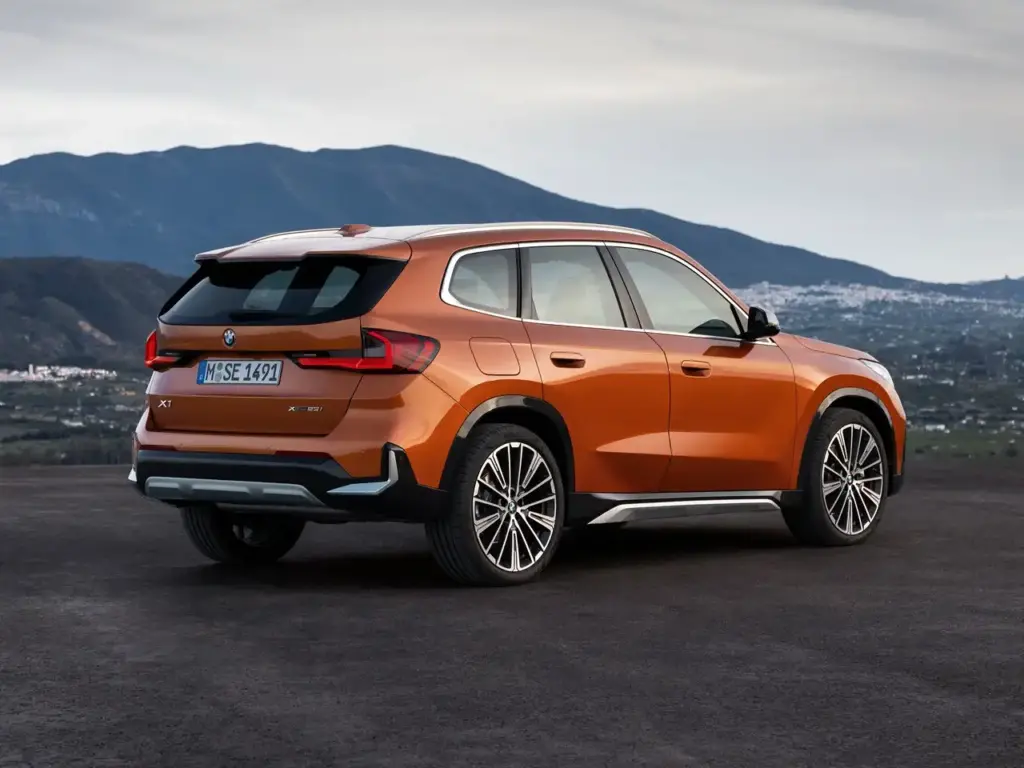
2023 BMW X1 Fuel Economy & Efficiency
EPA Ratings
EPA estimates 25 MPG city, 34 MPG highway, and 28 MPG combined—slightly better than 2022 model both metrics despite 13 HP increase[1]. Improved efficiency showcases engineering achievement delivering more power with better economy. Better efficiency than Mercedes-Benz GLA competitors establishing efficiency advantage.
Premium unleaded fuel recommended optimizing performance and efficiency. Real-world efficiency varies significantly based on driving style and conditions. Highway driving optimizes economy while city driving with frequent acceleration reduces MPG substantially.
EPA Fuel Economy Ratings:
- City: 25 MPG
- Highway: 34 MPG
- Combined: 28 MPG
- Improvement: Better than 2022 despite +13 HP
- Fuel type: Premium unleaded recommended
- Comparison: Better than Mercedes GLA
Real-World Fuel Economy
Car and Driver observed 23 MPG during testing period falling short of 28 MPG combined EPA estimate[1]. Real-world results reflect aggressive driving style during performance evaluation. Highway driving generally matches EPA estimates under favorable conditions. City driving with turbo engine requires throttle enrichment reducing efficiency.
Aggressive driving penalties significant affecting real-world economy. Conservative driving maximizes efficiency approaching or exceeding EPA estimates. Premium fuel requirement increases operating expenses approximately $300-500 annually versus regular unleaded depending on driving patterns.
Efficiency Compared to Competitors
Significantly better than Audi Q3 rated 23 city / 30 highway / 25 combined MPG—3 MPG combined advantage. Better than Volvo XC40 rated 24 city / 32 highway / 27 combined MPG—1 MPG combined advantage. More power yet more economical versus competitors represents compelling value proposition[1].
Class-leading efficiency for power output justifies premium positioning. Competitive operating costs for luxury segment. Lower fuel costs than larger BMW X3 despite similar performance capability. For buyers considering alternatives, exploring Audi Q5 years to avoid provides valuable reliability insights.
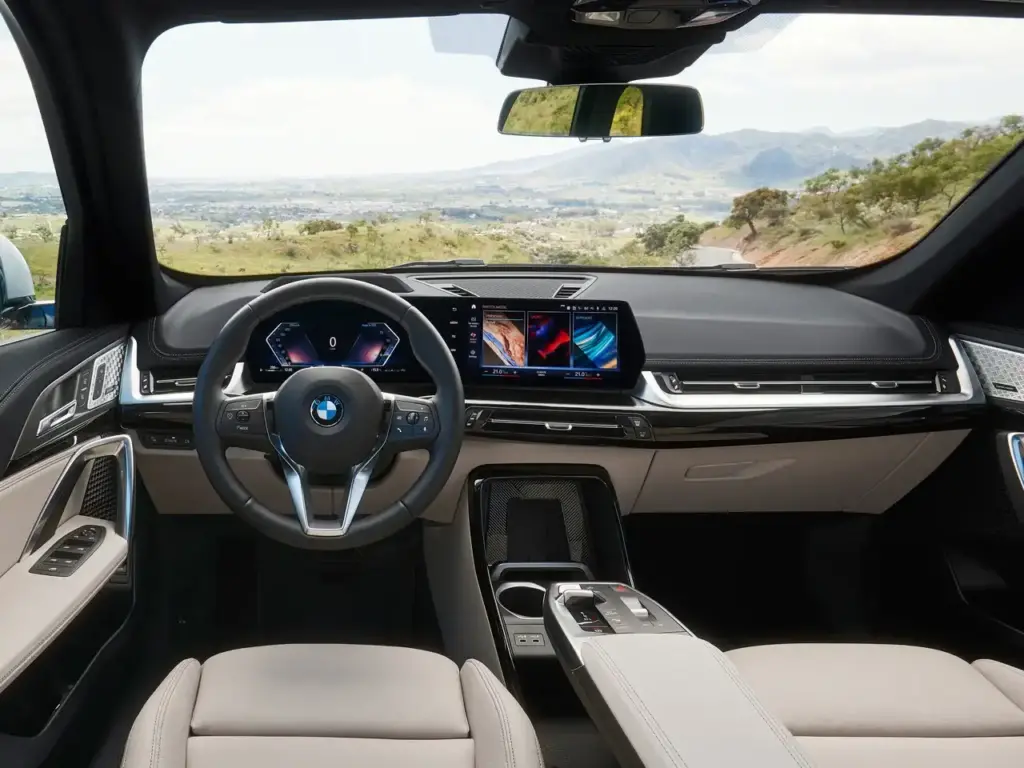
2023 BMW X1 Interior & Comfort
Cabin Design & Modern Aesthetic
Significant overhaul creates modern design addressing previous generation’s dated interior. High-tech, minimalist approach emphasizes digital integration. Floating center console creates open feel maximizing storage space versus traditional center stack[1]. Toggle-switch shift lever adopts minimalist design freeing console real estate.
Designer elements including textured speaker grilles add visual interest. Ambient interior lighting customizable creates personalized atmosphere. Premium materials despite entry-level positioning elevate ambiance. Clean, uncluttered dashboard layout reduces visual complexity emphasizing simplicity[1].
Interior Design Highlights:
- Significant overhaul: Modern transformation
- High-tech minimalism: Digital emphasis
- Floating console: Open, spacious feel
- Toggle shifter: Minimalist design
- Designer elements: Textured grilles
- Ambient lighting: Customizable atmosphere
- Premium materials: Entry-level transcendence
- Clean dashboard: Uncluttered layout
BMW Curved Display & iDrive 8
Single-piece curved display houses dual screens creating seamless visual integration. 10.25-inch digital instrument cluster provides configurable driver information. 10.7-inch central touchscreen serves as infotainment hub[1]. Crisp-looking presentation praised for clarity and graphics quality.
iDrive 8 operating system debuts flagship-level technology in entry-level SUV—impressive democratization. Wireless Apple CarPlay and Android Auto standard enable cable-free connectivity. Navigation system standard provides comprehensive turn-by-turn directions. Voice command system works well understanding natural language inputs[1]. Cars.com declares “winning multimedia system” praising comprehensive capabilities[4].
Touchscreen Dependency Controversy
Physical iDrive rotary controller removed represents major criticism from enthusiasts and reviewers. Climate control buttons eliminated forcing all temperature adjustments through touchscreen menus[1][3]. BMW Blog declares this “huge mistake” noting distraction and reduced intuitiveness versus tactile controls[3].
Forces reliance on touchscreen or voice commands eliminating blind operation capability. Car and Driver notes “cumbersome climate controls” requiring eyes-off-road interaction[1]. Consumer Reports cites “less user-friendly controls” as significant drawback tempering otherwise positive assessment[4]. Learning curve exists for touchscreen dependency creating frustration during adaptation period.
Materials & Build Quality
High-quality materials throughout cabin justify luxury positioning. Soft-touch surfaces in key contact areas enhance tactile quality. Premium feel exceeds expectations for entry-level SUV. Excellent assembly quality reported with zero creaks or rattles[1].
Standard synthetic leather (SensaTec) upholstery delivers premium appearance and feel. Optional genuine leather available for traditionalists. Wood trim options provide warmth and natural elegance. Improved over previous generation significantly addressing historical criticism regarding BMW interior quality[3].
Space & Passenger Accommodations
Slightly longer, taller, wider than 2022 model delivers minor passenger space increases. Previous model already “roomy for its size” per Car and Driver—improvements build on strong baseline[1]. Passenger volume measures 55 cubic feet front and 50 cubic feet rear. Five-passenger seating capacity accommodates typical family needs.
BMW Blog notes “surprisingly spacious in back seat” praising adult accommodations[3]. Generous legroom front and rear prevents cramped feeling. Ample headroom both rows accommodates taller passengers. Comfortable for adults all positions during extended journeys.
Cargo Space & Storage
Behind rear seats provides 26 cubic feet (540 liters) cargo capacity—adequate for daily hauling needs[1]. Rear seats folded expands to 57 cubic feet (1,600 liters) maximizing utility. 35 liters more boot space than predecessor represents meaningful improvement. 40/20/40 split-folding rear seats enable flexible storage configurations.
Competitive with segment rivals meeting typical expectations. More space than Audi Q3 establishing utility advantage. However, less than Mercedes-Benz GLB’s class-leading capacity accommodating larger families.
Seat Comfort & Adjustability
Redesigned standard seats improve comfort over predecessor. Optional sport seats with enhanced bolstering provide better lateral support during spirited driving. M Sport package includes aggressively bolstered seats optimized for performance driving[1].
Generous adjustment range accommodates varying driver sizes. Heated front seats available as standalone option worthwhile for cold-weather states. Heated steering wheel standalone option adds winter comfort. Long-distance comfort praised by reviewers noting fatigue-free extended driving[3].
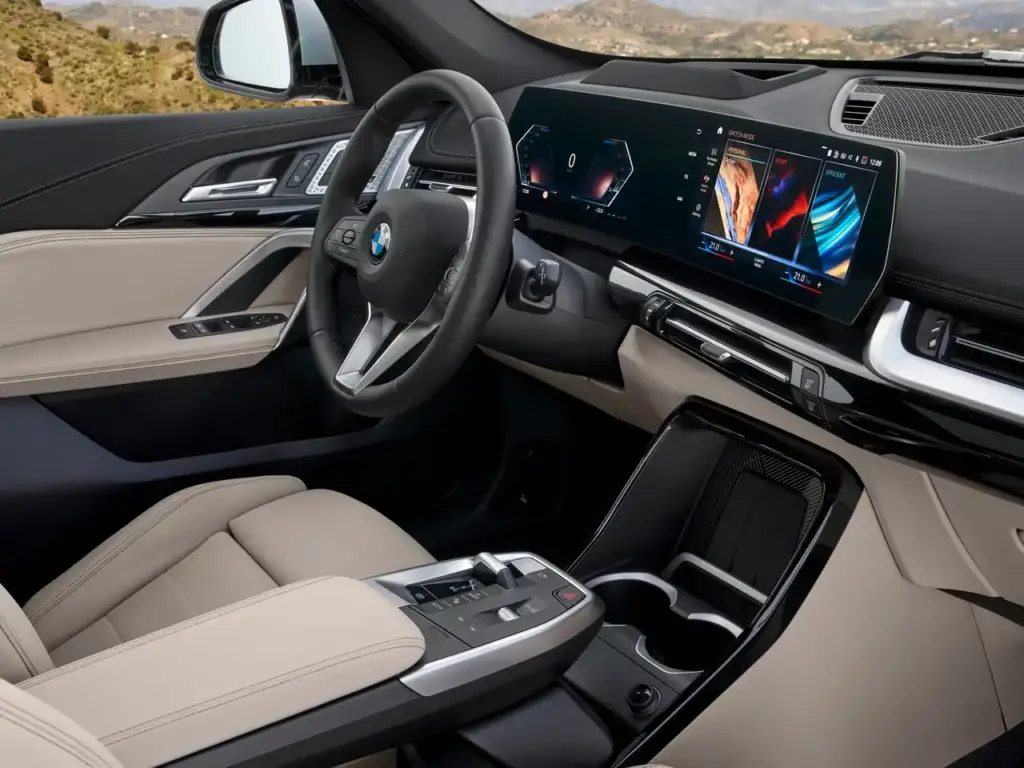
2023 BMW X1 Technology & Features
iDrive 8 Infotainment System
Latest iDrive 8 matching flagship models represents impressive democratization bringing premium technology to entry-level SUV. Flagship-level tech in smallest BMW showcases commitment to comprehensive lineup enhancement[1]. BMW Curved Display integration creates seamless visual experience.
Touch interface serves as primary input method replacing beloved rotary controller. Voice controls with natural language processing understand conversational commands. Cars.com declares “winning multimedia system” praising responsiveness and capabilities[4]. Remote software updates capability ensures currency throughout ownership. My BMW App enables remote vehicle control including climate preconditioning and door lock verification[1].
Smartphone Integration
Wireless Apple CarPlay and Android Auto standard eliminate cable clutter enabling convenient connectivity. Cable-free operation simplifies device integration. However, some connectivity issues reported by owners creating frustration[5]. SiriusXM satellite radio standard provides comprehensive audio entertainment.
Multiple USB ports throughout cabin enable simultaneous device charging. Wireless charging pad included with Convenience Package eliminates cable requirements for compatible smartphones. Integration with iDrive 8 system enables seamless control through central interface[1].
Digital Instrumentation
10.25-inch digital instrument cluster provides configurable display layouts matching preferences. Crisp, clear graphics praised for readability under varying lighting conditions. Integration with central touchscreen creates cohesive digital ecosystem[1].
Head-up display optional with Premium Package projects key information onto windshield including speed, navigation directions, and safety warnings. Reduces eyes-off-road time enhancing safety during spirited driving.
Audio Systems
Standard audio system adequate for typical listeners though audiophiles desire enhancement. Harman/Kardon premium audio optional with Premium Package delivers enhanced sound quality justifying upgrade. Speaker placement optimized throughout cabin. Integration with iDrive 8 system enables comprehensive control[1].
Optional Technology Upgrades
360-degree exterior camera optional with Premium Package simplifies parking in tight spaces displaying bird’s-eye view. Parking assistance automated features enable hands-free parallel and perpendicular parking. Driving Assistant Professional provides advanced driver aids expanding semi-autonomous capabilities[1].
Enhanced navigation features include real-time traffic information and predictive routing. Augmented reality navigation elements overlay directions on real-world camera view enhancing situational awareness. Connected services and apps expand functionality beyond baseline features.
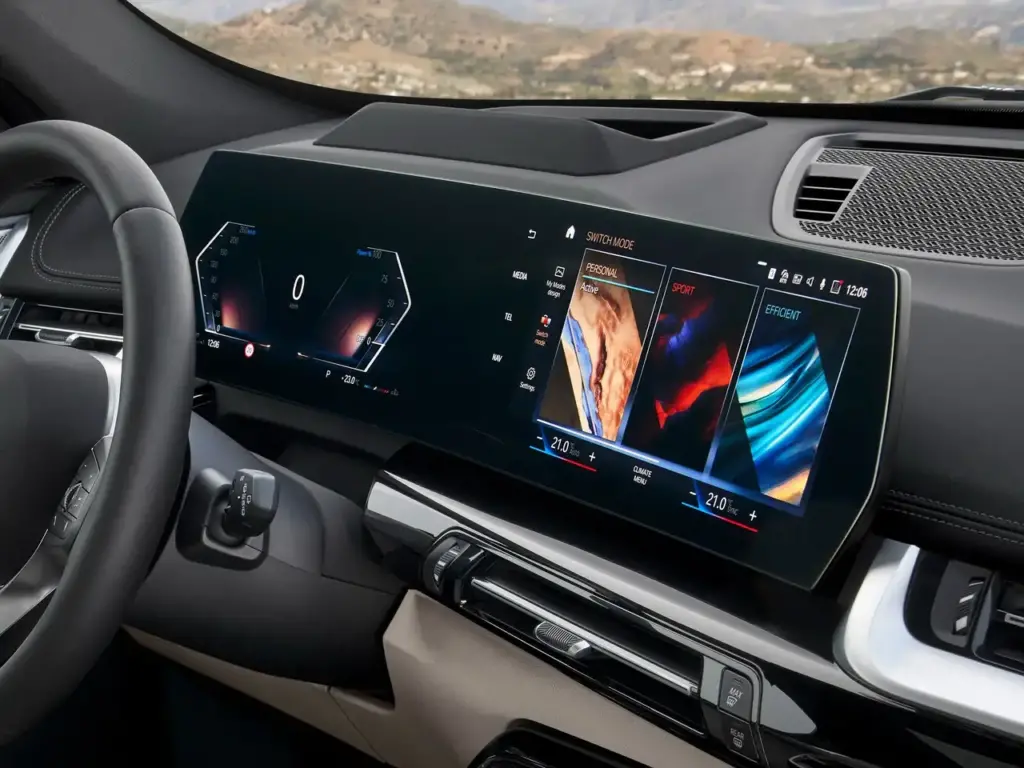
2023 BMW X1 Safety Features
Standard Active Safety Systems
Comprehensive Active Driving Assistant suite standard all models provides multi-layered protection. Frontal collision warning with automatic emergency braking detects potential impacts applying brakes if driver fails responding[1]. Pedestrian detection standard identifies pedestrians in vehicle path.
Lane departure warning standard alerts when drifting from lane without signaling. Blind-spot monitoring standard—new standard feature for 2023—monitors adjacent lanes[1]. Rear cross-traffic alert standard warns of approaching vehicles when reversing. Front and rear parking sensors standard provide comprehensive coverage. Tire pressure monitoring system and electronic stability control standard complete baseline safety equipment.
Standard Safety Equipment:
- Active Driving Assistant: Comprehensive suite
- Frontal collision warning: With auto braking
- Pedestrian detection: Standard capability
- Lane departure warning: Standard
- Blind-spot monitoring: New standard 2023
- Rear cross-traffic alert: Standard
- Parking sensors: Front and rear
- TPMS: Tire pressure monitoring
- ESC: Electronic stability control
Advanced Safety Structure
Third-generation chassis incorporates advanced safety engineering. Crumple zones and reinforced passenger cell protect occupants during impacts. Multiple airbags provide comprehensive occupant protection. Modern safety design standards ensure latest crash protection technologies[1].
Improved over previous generation structure incorporating lessons from real-world crash analysis. High-strength steel strategic placement optimizes crash energy management. Side-impact protection beams reinforce doors preventing intrusion.
Optional Driver Assistance Packages
Driving Assistant Professional available expands semi-autonomous capabilities. Enhanced features include adaptive cruise control with stop-and-go maintaining set following distance automatically. Lane centering assistance maintains lane position with gentle steering inputs. Traffic jam assist provides semi-autonomous operation in congested traffic[1].
360-degree camera system optional with Premium Package provides comprehensive view during parking maneuvers. Parking assistance automated features enable hands-free parallel and perpendicular parking simplifying challenging situations. Head-up display safety benefit projects warnings onto windshield reducing eyes-off-road time.
Crash Test Ratings
NHTSA ratings not published at 2023 launch—testing results awaited. IIHS testing results pending evaluation by insurance industry safety organization. Previous second-generation X1 received strong safety ratings establishing baseline expectations for successor[6].
Third-generation designed to latest safety standards incorporating modern crash protection technologies. Comprehensive safety equipment standard distinguishes BMW from budget competitors. Final crash test results expected following official evaluation completion.
Known Safety Issues & Recalls
Multiple brake recalls reported though unresolved early creating concern among owners[5]. Integrated Braking System (IBS) recall issued February 2024 addressing brake malfunction potential. DSC (Dynamic Stability Control) issues reported affecting stability system operation.
Airbag concerns per some owner complaints documented in forums[7]. Transmission recall addressed successfully resolving shifting issues. Fuel door malfunction reported by some owners preventing refueling access. Long remedy timelines frustrate owners with brake recalls taking 6+ months for fixes per owner accounts[5].
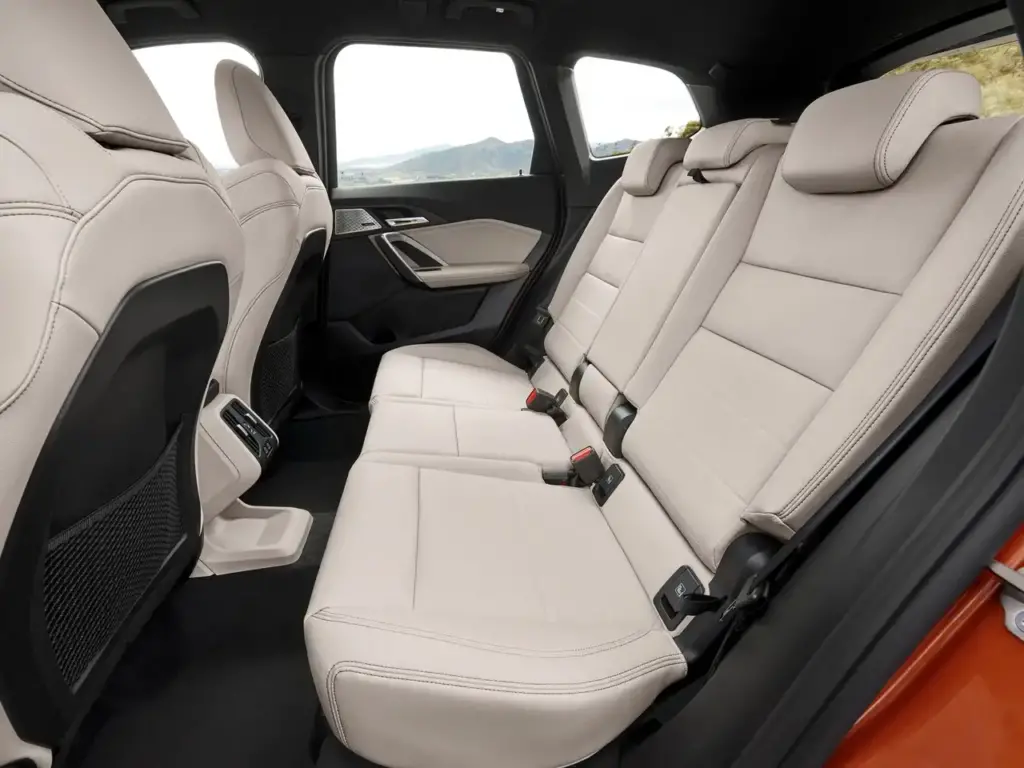
2023 BMW X1 Reliability & Common Problems
First-Year Redesign Reliability
Launch year for third-generation platform means limited long-term reliability data available making definitive assessment premature[6]. Early production issues emerging create uncertainty. Mixed owner reviews regarding dependability—some report excellent reliability while others experience multiple service visits within first year[5].
Reddit owner declares 2023 X1 “total disaster” noting regret purchasing and wishing different brand selection[5]. Typical first-year redesign risks present—early adopters absorb quality control learning curve. J.D. Power reliability rating 83 out of 100 for 2022 previous-generation indicated above-average though third-generation ratings unavailable[6].
Common Electronic Problems
Chronic Apple CarPlay connection loss reported creating navigation frustration[5]. Dashboard screen malfunctions and error messages disrupt operation. Spontaneous menus popping up without prompt distract drivers. Intermittent loss of safety systems functionality affecting collision mitigation, rear traffic alert, and blind spot monitoring[5].
Power seat memory loss intermittently requires reprogramming. Doors not locking and mirrors not folding intermittently suggest electrical system issues. One owner reports car entering safe mode due to “outdated software” while driving alone on freeway at night—serious safety concern[5].
Common Electronic Issues:
- CarPlay disconnections: Chronic connectivity loss
- Screen malfunctions: Error messages, freezing
- Spontaneous menus: Unprompted pop-ups
- Safety system dropouts: Intermittent failures
- Seat memory loss: Reprogramming required
- Door/mirror issues: Intermittent malfunctions
- Safe mode entry: Software-triggered failures
Transmission & Drivetrain Issues
Dual-clutch transmission slips reported affecting smooth operation. Transmission thumps and jerks on takeoff create refinement concerns. Transmission getting stuck in gears forces limp mode reducing power[5]. Drivetrain malfunction warnings with yellow wrench and engine icon on dash alarm drivers.
Consumer Reports notes inconsistent low-speed power delivery affecting refinement during typical urban driving[4]. Turbo lag affects acceleration response creating hesitation. Transmission recall addressed successfully though some owners report continued issues post-fix.
Build Quality & Mechanical Problems
Interior door trims peeling reported within first year suggesting quality control lapses[5]. Fuel door not opening malfunction prevents refueling requiring two-day parts wait for repair. Brake system concerns generate multiple recalls affecting stopping confidence.
Braking system malfunction warnings create safety anxiety. Airbag malfunction warning lights illuminate without apparent cause. Software module replacements needed addressing various electronic gremlins. Some reviewers note visible signs of cost cutting tempering premium positioning perception.
Owner Satisfaction & Complaints
Multiple owners express regret purchasing noting more frustration than joy[5]. Dealership service quality inconsistent—some report excellent while others experience frustration. BMW Corporate response inadequate reported with inconsistent resolution approaches. Some owners pursue lemon law claims suggesting serious recurring issues[7].
One owner documents car in service 48 days first year with 5 service visits during initial ownership period[5]. Electronic malfunctions never fixed properly despite multiple attempts create ongoing frustration. First BMW experience disappointments may prevent future brand consideration[5].
Warranty & Service Considerations
Basic warranty covers 4 years / 50,000 miles matching powertrain warranty duration[6]. Roadside assistance included during warranty period. However, recall remedy timelines excessively long—owners report 6+ months for brake recall fixes and 7 months for transmission recall[5].
Some owners claim NHTSA Guidelines violated regarding reasonable repair timeframes[7]. Parts availability affects repair timelines extending service visits significantly. Dealership service quality varies dramatically by location affecting ownership experience. Extended warranty strongly recommended given electronic complexity and early production issues.
Long-Term Ownership Concerns
Electronic complexity creates future reliability concerns as vehicle ages and components approach end-of-life. iDrive 8 system still being refined through software updates suggesting ongoing development. ConnectedDrive subscription concerns reported with potential feature paywalls—heated seats paywalled in Australia market creating backlash[5].
Premium fuel requirement increases costs versus mass-market competitors accepting regular unleaded. Maintenance costs typical for BMW luxury brand reflecting premium positioning. According to Autvex reliability analysis, waiting for later production units advisable if concerns significant allowing BMW time addressing early production issues through running changes.
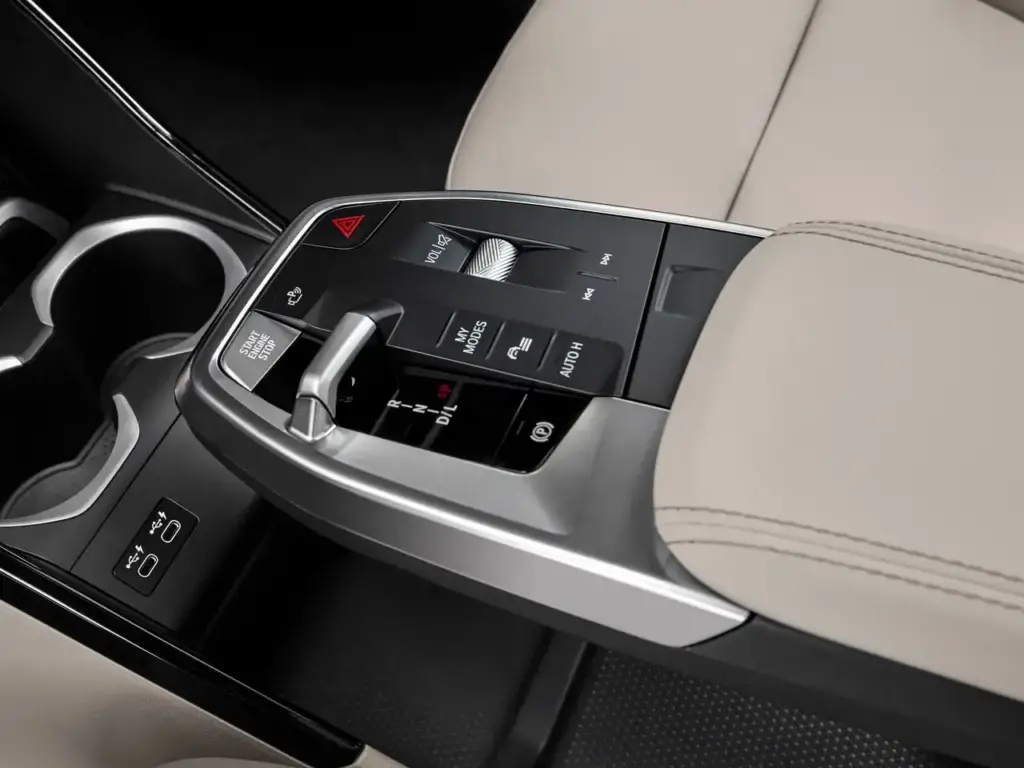
2023 BMW X1 vs Competitors
BMW X1 vs Mercedes-Benz GLA-Class
Pricing nearly identical with X1 $39,595 versus GLA $38,650 establishing head-to-head competition[1]. Power advantage X1 with 241 HP versus GLA’s lower output. Handling characteristics favor X1 with more athletic and engaging dynamics versus comfort-focused GLA.
Ride quality shows GLA softer, X1 firmer BMW character reflecting different philosophies. Interior technology advantage X1 with more modern iDrive 8 versus GLA’s MBUX system. Space advantage X1 with roomier interior and more cargo capacity. Value advantage X1 with better standard equipment justifying similar pricing. Both represent first-year redesigns for 2023 creating similar reliability uncertainties.
BMW X1 vs Audi Q3
Power dominance X1 with 241 HP versus Q3’s 184-228 HP (trim dependent) providing performance advantage. Fuel economy significantly better X1 rated 28 combined MPG versus Q3’s 23 city / 30 highway / 25 combined MPG—3 MPG combined advantage[1]. Handling engagement favors X1 with more athletic dynamics versus Q3’s composed but less exciting character.
Space shows X1 slightly more knee/footroom benefiting from longer wheelbase. Interior quality both premium though different philosophies—German engineering excellence both. Technology offerings both modern representing different brand approaches. Ride quality Q3 softer while X1 sportier setup reflecting BMW character. Value assessment “X1 better than its competitors” per comparison analysis[4]. For deeper comparison, exploring Audi Q5 vs BMW X3 provides cross-segment insights.
BMW X1 vs Volvo XC40
Power advantage X1 with 241 HP versus XC40’s 194-228 HP (trim dependent). Fuel economy advantage X1 rated 28 combined MPG versus XC40’s 24 city / 32 highway / 27 combined MPG—1 MPG combined advantage. Handling engagement strongly favors X1 providing more enjoyable driving experience for enthusiasts[1].
Safety reputation advantage Volvo with legendary safety leadership though both offer comprehensive protection. Interior design represents different philosophies—Scandinavian minimalism versus German sport luxury. Space shows similar dimensions and cargo capacity eliminating utility advantage either direction. Ride quality XC40 potentially softer versus firmer BMW setup. Technology offerings both comprehensive representing modern expectations.
BMW X1 vs Lexus UX
Size advantage X1 with larger dimensions providing more interior space and cargo capacity. Power dominance X1 with 241 HP significantly exceeding UX’s lower output. Handling character advantage X1 with more athletic dynamics versus comfort-oriented Lexus. Reliability reputation advantage Lexus with legendary dependability versus BMW’s mixed record[6].
Technology edge X1 with more modern interface versus Lexus’s conservative approach. Fuel economy competitive ratings both delivering solid efficiency. Pricing similar positioning both as entry-level luxury SUVs. Hybrid option exclusive to UX providing alternative powertrain choice unavailable X1.
Value Assessment vs Segment
YouTube comparison declares X1 “better than its competitors” citing superior powertrain, interior, and design[4]. More power yet more economical versus competitors represents compelling advantage. Superior powertrain delivers engagement distinguishing X1. Engaging driving dynamics establish segment leadership for enthusiasts.
Comprehensive standard equipment justifies premium positioning. The Drive declares 2023 X1 “perfect first luxury car” praising accessibility and capability. Strong value proposition at $39,595 entry point. However, reliability concerns temper recommendation suggesting competitors offer better dependability though less engagement.
| Comparison | BMW X1 | Mercedes GLA | Audi Q3 | Volvo XC40 | Lexus UX |
|---|---|---|---|---|---|
| Starting Price | $39,595 | $38,650 | ~$38,000 | ~$37,000 | ~$38,000 |
| Horsepower | 241 HP | 221 HP | 184-228 HP | 194-228 HP | 169-181 HP |
| 0-60 mph (tested) | 5.4 sec | ~6.9 sec | ~7.5 sec | ~7.0 sec | ~8.5 sec |
| MPG Combined | 28 MPG | 27 MPG | 25 MPG | 27 MPG | 39 MPG (hybrid) |
| Cargo (folded) | 57 cu ft | 51 cu ft | 48 cu ft | 57.5 cu ft | 43 cu ft |
| Key Advantage | Dynamics | Luxury | Tech | Safety | Reliability |
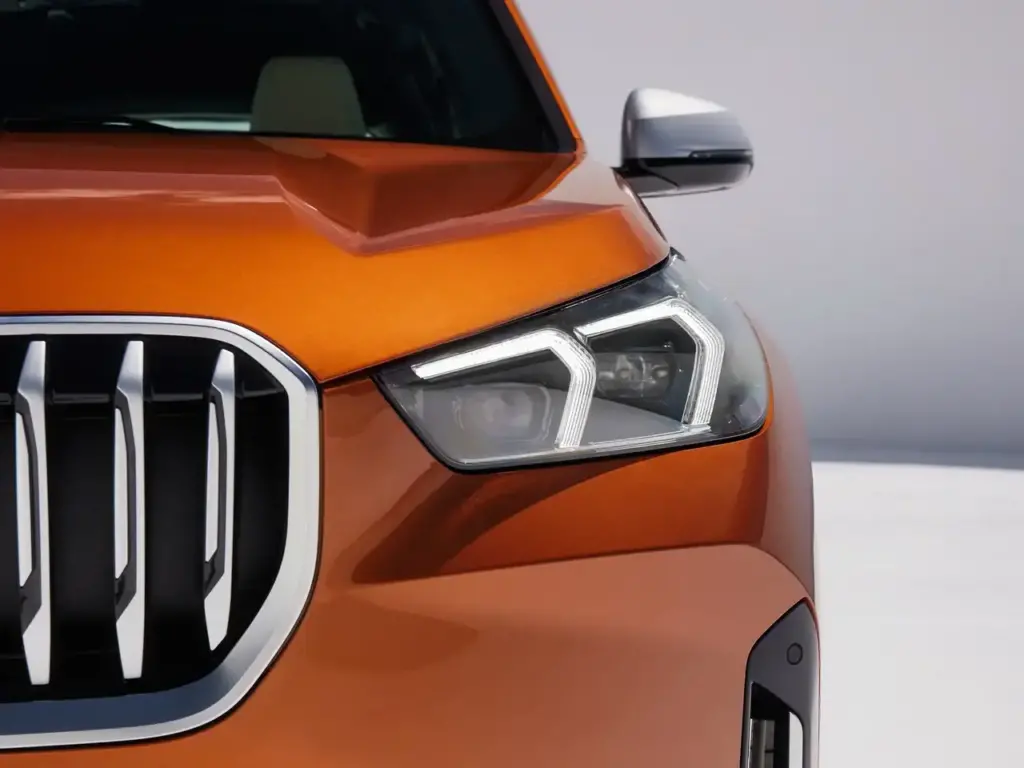
2023 BMW X1 Ownership Costs & Value
Purchase Price & Market Positioning
Starting MSRP $39,595 for xDrive28i plus approximately $1,000-1,175 destination charge totals around $40,600-40,770 out-the-door before taxes and fees[1]. However, Car and Driver’s as-tested price reached $50,795 demonstrating how optional packages escalate costs[1]. Single trim simplifies shopping eliminating trim-level confusion.
Competitive entry-level luxury SUV pricing positions X1 attractively versus competitors. Premium over previous generation reflects comprehensive redesign, enhanced technology, more powerful engine, and standard all-wheel drive. Entry point into BMW brand ownership at manageable price versus larger X3 starting significantly higher.
Total Cost of Ownership
Insurance costs typical for luxury SUV segment ranging $1,200-1,800 annually depending on location, driver age, and coverage levels. Premium fuel requirement increases expenses approximately $300-500 annually versus regular unleaded. Maintenance costs typical for BMW luxury brand reflecting premium positioning[6].
Four-year/50,000-mile warranty coverage provides baseline protection. Roadside assistance included during warranty period. However, potential reliability issues increase costs requiring multiple service visits beyond routine maintenance[5]. Extended warranty highly recommended protecting against expensive electronic repairs post-warranty expiration.
Fuel & Operating Costs
28 MPG combined competitive efficiency for turbocharged AWD luxury SUV. Premium unleaded fuel recommended optimizing performance increasing fuel expenses. Better efficiency than most competitors reducing operating costs over ownership period. More power yet economical advantage justifies premium positioning[1].
Lower fuel costs than larger BMW X3 despite similar performance capability. Real-world 23 MPG observed during Car and Driver testing falls short of EPA estimate though reflects aggressive evaluation driving[1]. Annual fuel costs manageable for class assuming typical driving patterns.
Depreciation & Resale Value
First-year redesign depreciation typically 20-30% reflecting new-model premium erosion. Strong BMW brand recognition supports residual values versus less established competitors. Third-generation newer technology advantage should hold value better than previous generations benefiting from modern features[6].
However, reliability concerns may affect resale if electronic issues prove widespread tempering values. Compact luxury SUV segment highly competitive affecting all brand values through market saturation. Limited used inventory currently for 2023 model reflecting recent introduction. Certified pre-owned provides valuable warranty protection justifying premium over private party sales. Used 2023 models currently range $32,000-42,000 (October 2025 estimates) representing 15-25% depreciation from original MSRP.
Value Proposition Analysis
Comprehensive standard equipment justifies $39,595 pricing delivering more features baseline than competitors. More features standard eliminating need for expensive option packages. Engaging driving dynamics differentiate X1 from bland alternatives. Modern technology delivers flagship-level capabilities in entry-level SUV[1].
Spacious interior for compact classification maximizes utility within manageable footprint. The Drive declares “perfect first luxury car” emphasizing accessibility and comprehensive capability. Cars.com describes “polished and plucky small SUV” praising well-rounded execution[4]. Strong value at $39,595 entry point though reliability concerns temper recommendation versus more dependable competitors.
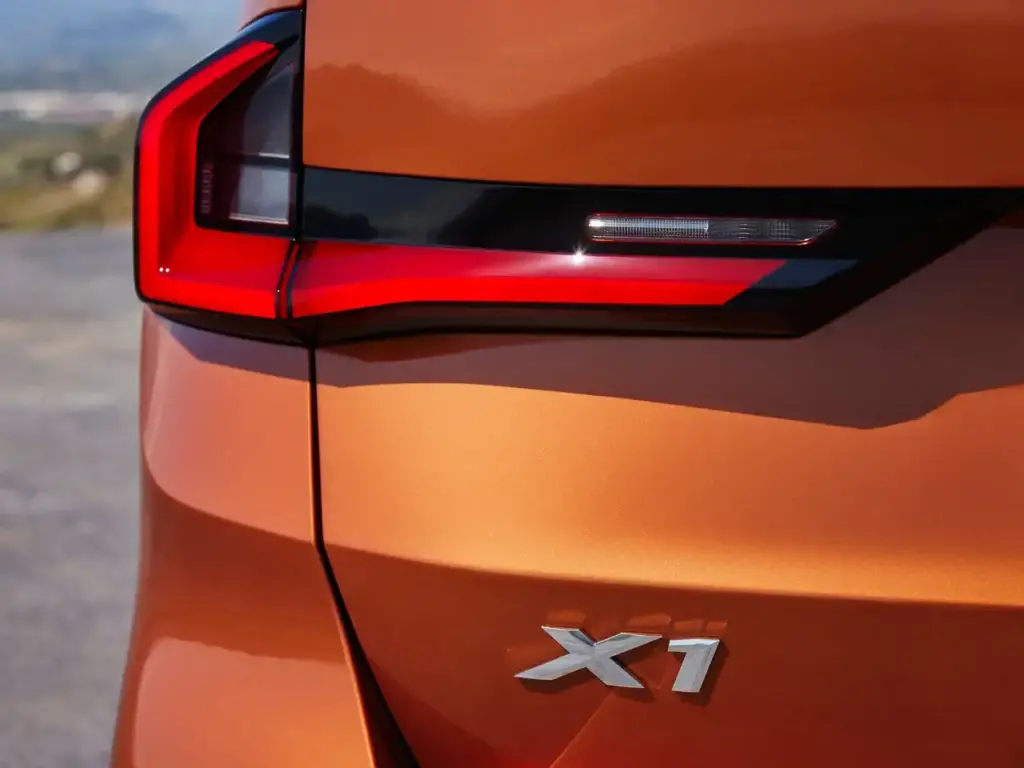
Should You Buy the 2023 BMW X1?
Who the 2023 X1 Is Perfect For
First-time luxury car buyers seeking accessible entry point into premium segment find X1 ideally positioned. Driving enthusiasts prioritizing engagement discover dynamic character distinguishing BMW from anonymous alternatives. Tech-savvy buyers accepting touchscreen controls embrace modern interface appreciating digital integration[1].
Urban drivers needing compact maneuverability benefit from nimble dimensions facilitating city parking. BMW brand enthusiasts wanting smallest SUV access brand ownership at manageable price point. Those valuing comprehensive standard equipment appreciate baseline features eliminating expensive option packages. Buyers wanting more power than competitors enjoy 241 HP performance advantage. Efficient luxury SUV seekers appreciate 28 MPG combined competitive economy.
Ideal Buyer Profile:
- First-time luxury car buyers
- Driving enthusiasts prioritizing engagement
- Tech-savvy accepting touchscreen interface
- Urban drivers needing compact dimensions
- BMW brand enthusiasts entry point
- Comprehensive standard equipment valuers
- Performance prioritizers (241 HP advantage)
- Efficiency seekers (28 MPG combined)
Who Should Consider Alternatives
Buyers preferring physical iDrive controller find touchscreen-only interface frustrating eliminating beloved tactile controls[3]. Those wanting traditional climate control buttons discover touchscreen dependency distracting requiring eyes-off-road interaction. Drivers prioritizing softest ride quality find firmer BMW character compromising comfort versus softer competitors[1].
Buyers concerned about first-year reliability should avoid early production units allowing BMW time addressing issues through running changes[5]. Those avoiding premium fuel costs find mass-market alternatives accepting regular unleaded more economical. Families needing third-row seating must consider Mercedes-Benz GLB offering optional third row. Buyers prioritizing proven reliability should consider Lexus UX with legendary dependability reputation[6]. Those preferring hybrid powertrains find Lexus UX Hybrid unavailable X1 alternative.
Trim Level & Options Recommendations
Only xDrive28i trim available eliminates choice simplifying decision. Convenience Package highly recommended bundling keyless entry, panoramic sunroof, wireless charging, and auto-dimming mirrors adding valuable features. M Sport Package for enthusiasts only—firmer ride compromises daily comfort unsuitable typical buyers[2].
Premium Package adds valuable tech features including head-up display, Harman/Kardon audio, and 360-degree camera justifying investment. Heated seats and steering wheel worthwhile for cold-weather states enhancing winter comfort. Skip M Sport if ride comfort priority—firmer suspension compromises everyday driving. As-tested prices reach $50,000+ fully loaded though base model well-equipped without options[1].
Common Pitfalls to Avoid
Avoid early production VINs if reliability concerns significant allowing BMW time implementing running changes. Test touchscreen controls extensively before buying ensuring comfort with interface eliminating post-purchase frustration. Verify all recalls completed on used models checking NHTSA database for outstanding campaigns[5].
Check electronic systems thoroughly during inspection testing infotainment, safety features, and climate controls. Review ConnectedDrive terms carefully given subscription concerns and potential feature paywalls reported in some markets. Consider extended warranty protection strongly given electronic complexity and early production issues[5]. Test drive on rough roads assessing ride quality tolerance for firmer BMW character. Verify Apple CarPlay connectivity works properly given chronic connection loss reports[5]. Check fuel door operation given malfunction reports. Confirm brake system recall status ensuring safety-critical issues resolved.
Timing Considerations
First full production year for third-generation means early adopter risks present. **2024 model adds M35i performance variant with *312 HP* providing alternative option. Waiting for 2024+ allows reliability improvements as BMW addresses early production issues. 2023 used models available with depreciation savings offering value proposition for risk-tolerant buyers.
Later 2023 production VINs preferable benefiting from running production changes. Allow time for BMW implementing quality improvements addressing early owner complaints. Consider waiting for long-term reliability data emerging over next 1-2 years providing clearer picture. Current 2023 owners report mixed satisfaction creating uncertainty[5].
Final Verdict & Expert Consensus
The Drive declares 2023 X1 “perfect first luxury car” praising accessibility, capability, and comprehensive equipment. Cars.com describes “polished and plucky small SUV” offering spirited acceleration and engaging road manners[4]. Car and Driver awards solid assessment noting comprehensive upgrade though highlighting touchscreen dependency concerns[1].
BMW Blog praises improved handling and interior quality but criticizes removal of iDrive rotary controller calling touchscreen-only interface “huge mistake”[3]. Consumer Reports acknowledges more power and increased room but cites “side steps” including inconsistent low-speed power delivery and less user-friendly controls[4]. Comparison analysis concludes X1 “better than its competitors” citing superior powertrain, interior, and design.
Engaging driving dynamics establish segment leadership for enthusiasts prioritizing involvement. However, touchscreen dependency represents main drawback frustrating traditionalists. Reliability concerns temper recommendation—first-year risks create uncertainty. Strong value proposition at $39,595 entry point though reliability unknowns suggest caution. Best-in-class driving dynamics justify consideration though dependability questions remain unanswered. First-year redesign risks typical requiring patience for quality improvements.
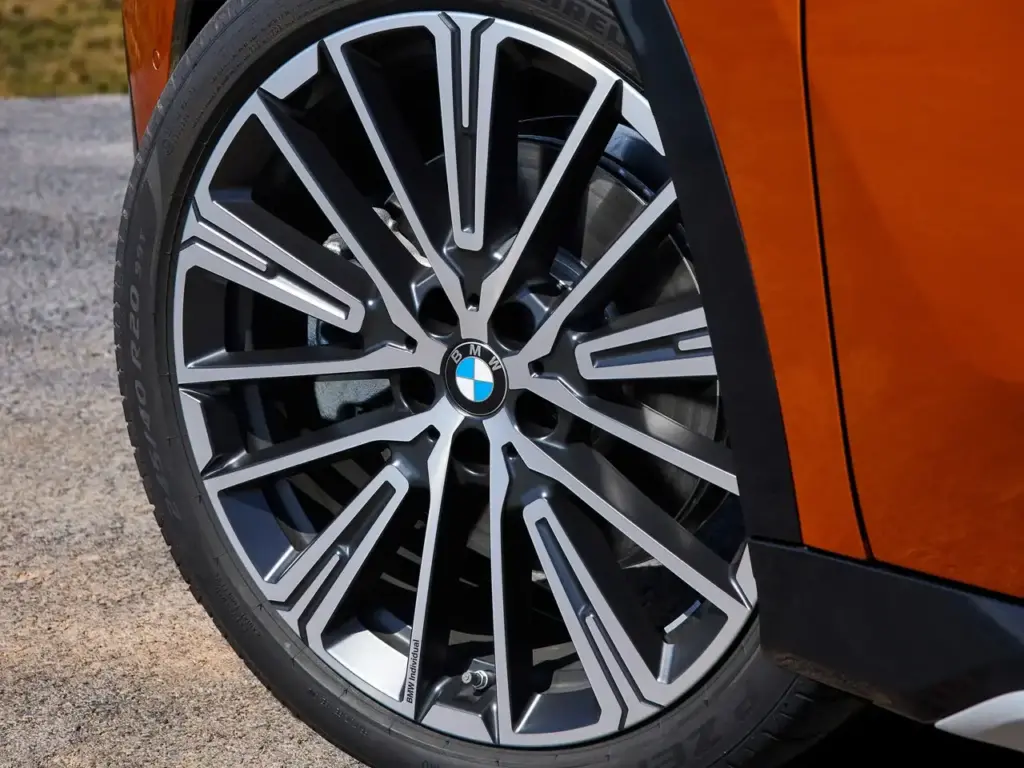
Key Takeaways
- The 2023 X1 delivers complete third-generation redesign with 241 HP (+13 HP), new transmission, standard AWD starting $39,595.
- Real-world 5.4-second 0-60 mph substantially beats BMW’s 6.2-second claim while achieving competitive 28 MPG combined fuel economy.
- Flagship-level iDrive 8 with BMW Curved Display debuts entry-level SUV though eliminates physical controls frustrating traditionalists.
- First-year reliability concerns including electronic malfunctions, transmission issues, and multiple brake recalls warrant caution before purchasing.
- Comprehensive standard equipment including blind-spot monitoring, wireless CarPlay/Android Auto, and navigation justifies premium pricing versus competitors.
- Engaging dynamics establish segment-leading driving experience though firmer ride compromises comfort versus softer Mercedes GLA, Audi Q3.
- Extended warranty strongly recommended protecting against electronic repair costs given early production quality issues reported by multiple owners.
FAQs
What is the price of the 2023 BMW X1?
The 2023 X1 xDrive28i starts at $39,595 MSRP plus approximately $1,000-1,175 destination charge totaling around $40,600-40,770 before taxes. Car and Driver’s as-tested price reached $50,795 with optional packages[1].
How much horsepower does the 2023 BMW X1 have?
What is the fuel economy of the 2023 BMW X1?
EPA estimates 25 MPG city, 34 MPG highway, and 28 MPG combined—slightly better than 2022 despite 13 HP increase. Car and Driver observed 23 MPG during testing period[1].
Does the 2023 BMW X1 have all-wheel drive?
What’s new for the 2023 BMW X1?
Is the 2023 BMW X1 reliable?
What are common problems with the 2023 BMW X1?
Common issues include chronic Apple CarPlay disconnections, dashboard screen malfunctions, transmission slips and jerks, drivetrain warnings, multiple brake recalls, fuel door malfunctions, and intermittent safety system failures requiring service visits[5].
Does the 2023 BMW X1 have physical climate controls?
No, the 2023 X1 eliminates physical climate control buttons forcing all temperature adjustments through touchscreen menus. BMW Blog calls this “huge mistake” noting distraction and reduced intuitiveness[3].
What is the cargo space in the 2023 BMW X1?
Cargo capacity measures 26 cubic feet behind rear seats expanding to 57 cubic feet with seats folded. This represents 35 liters more than predecessor with 40/20/40 split-folding rear seats enabling flexible configurations[1].
How fast is the 2023 BMW X1?
Car and Driver testing achieved 5.4-second 0-60 mph—substantially quicker than BMW’s 6.2-second estimate. Quarter-mile completed in 14.1 seconds at 99 mph. Top speed reaches manufacturer-claimed 149 mph[1].
Is the 2023 BMW X1 better than Audi Q3?
References
- Car and Driver. (2023). 2023 BMW X1 Review, Pricing, and Specs. https://www.caranddriver.com/bmw/x1-2023
- MotorTrend. (2022). 2023 BMW X1 Review: Expert Insights, Pricing, and Trims. https://www.motortrend.com/cars/bmw/x1/2023/
- BMW Blog. (2022). 2023 BMW X1 Review. https://www.bmwblog.com/2022/11/15/2023-bmw-x1-review/
- Cars.com. (2023). 2023 BMW X1 Consumer Reviews. https://www.cars.com/research/bmw-x1-2023/consumer-reviews/
- Reddit. (2024). BMW X1 2023 Total disaster. https://www.reddit.com/r/BMW/comments/1g66nri/bmw_x1_2023_total_disaster/
- Capital Motor Cars. (2024). BMW X1 Reliability: Performance and Durability Review. https://capitalmotorcars.com/bmw-x1-reliability-performance-durability-review/
- Lemberg Law. (2024). We Researched the Top 2023 BMW X1 Problems For You. https://lemberglaw.com/2023-bmw-x1-problems-complaints-lemon/

I am a senior automotive analyst at Autvex. Expert vehicle evaluations, in-depth reviews, and objective analysis helping readers make informed automotive decisions with years of industry experience.

